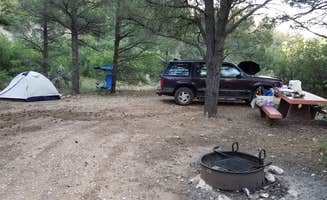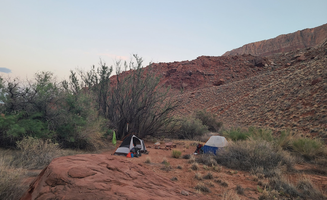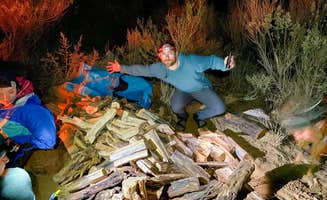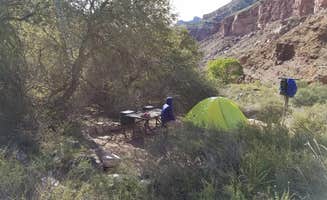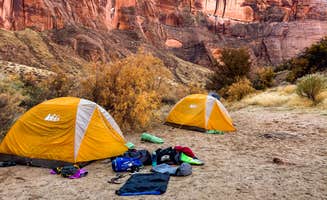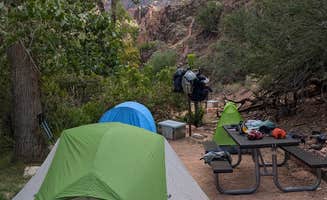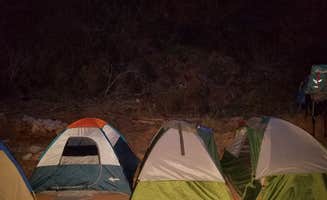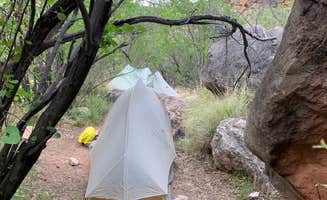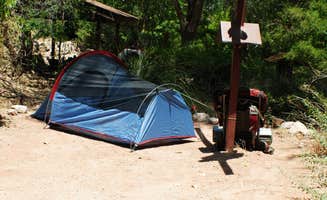Tent camping near Jacob Lake, Arizona offers easy access to the North Rim of Grand Canyon National Park at 8,000 feet elevation. The higher altitude creates a cooler climate than surrounding areas, with summer temperatures typically 15-20 degrees lower than the canyon floor. Clay road surfaces throughout the region can become problematic during wet weather, requiring careful planning during monsoon season.
What to do
Grand Canyon rim access: Indian Hollow Campground provides campers with proximity to the Thunder River trailhead. "There's a hike 1/2 mile down from the camp with epic views of the Grand Canyon. Highly recommend," notes Niki S. The campground makes an excellent base for canyon exploration.
Slot canyon exploration: Buckskin Gulch Dispersed Camping is located near one of the longest slot canyons in the world. According to Sarah W., "We were able to find a climbing area and hiking all within a mile from each other. It is a 21 mile segment that has awesome, narrow slot canyons." The area requires a $6 per vehicle fee for hiking.
Off-road adventures: The terrain around Crazy Jug offers opportunities for remote travel. Darwin N. reports, "One heck of a drive on a scary forest service road. Use a hi clearance vehicle." These roads provide access to isolated viewpoints away from typical tourist areas.
What campers like
Cooler temperatures: The higher elevation of FS Road #257 Dispersed Camping creates more comfortable camping conditions than lower elevations. Kristen S. notes, "Visited at the end of March, so def cold but not a negative. Just be prepared." The temperature difference is particularly valuable during summer months.
Cell service availability: Many remote camping areas still maintain connectivity. According to Kristen S., "I chose this spot for the ease of jumping back on 89A, and the clear open space in the first spot for my Starlink." This unexpected connectivity allows campers to stay in touch while enjoying remote locations.
Secluded campsites: Indian Hollow Campground offers quiet camping spots away from crowds. Drew C. recommends the area saying, "Quiet, secluded, and beautiful scenery. Long drive down a dirt road to reach but that's all part of the adventure." The extra effort to reach remote sites often results in more peaceful camping experiences.
What you should know
Road conditions vary: Access to many sites requires careful driving, especially after precipitation. Darwin N. warns about Crazy Jug, "One heck of a drive on a scary forest service road. Use a hi clearance vehicle." Clay content in local soil creates slick conditions when wet.
Limited facilities: Most dispersed sites lack amenities. At Seaman Wash Dispersed, Heather P. cautions, "The road is VERY long, and I was driving a 2WD van, towing a utility trailer... I turned down the road to scout out a place for us to park our 5th wheel for the night. Eventually the small camping spots disappeared." Be prepared with all necessary supplies.
Permit requirements: Some nearby backcountry camping locations require advance planning. For Buckskin Gulch Dispersed, Mack C. notes "permit required for overnight stay. can be acquired at blm office in Kanab." Check requirements before traveling to avoid disappointment.
Tips for camping with families
Weather preparation: Temperature fluctuations can be significant in this high-elevation region. At Buckskin Gulch, Brent E. describes it as "Quite quiet...not much traffic through the night or day." Pack appropriate clothing layers for children as temperatures can drop significantly after sunset.
Trail difficulty assessment: Some nearby trails offer exceptional experiences but require preparation. About Cottonwood Campground in Grand Canyon, Phillip L. advises, "very hot on the way to this camp site as there is not much cover on the trail." Research trail conditions before hiking with children.
Wildlife awareness: The region has diverse animal populations. Lauren R. from Cottonwood Campground warns, "Be aware of the crows though, they will tear up any packs left on the ground." Teach children proper food storage techniques and wildlife safety.
Tips from RVers
Site selection for larger vehicles: Not all dispersed areas accommodate larger rigs. At Seaman Wash Dispersed, Heather P. warns, "DO NOT attempt to pull a trailer in here unless you feel like driving all the way to the end to turn around, or want to back allllll the way out." Scout potential sites before committing to a spot with your RV.
Signal considerations: For those needing connectivity while camping, Kristen S. reports about FS Road #257 Dispersed Camping: "I am in a 37" Skoolie and this first spot was easy. Again, I didn't go further due to there being a ton of beautiful trees… but I wouldn't be able to get a signal." Position your RV strategically for optimal signal if needed.
Water availability: Most tent camping areas near Jacob Lake require self-sufficiency. At Bright Angel Campground, Jack L. notes it "had running water and a bathroom with full plumbing," but this is uncommon in the region. Bring sufficient water supplies for your stay at most locations.


